Otaniemi, a suburban campus surrounded by a long coastline, is facing challenges of urban densification in the recent years. Currently, approximately 70% of Otaniemi is impervious including streets, rooftops, and parking lots. The future development plans for Otaniemi suggest a continuous increase in the local population, students, and workers, which will lead to the expansion of the urban scene. The increased construction will add pressure to the outdated conventional stormwater system on the campus. This will result in adverse effects such as pluvial flooding due to stormwater overflows.
However, there is an enormous potential in using nature-based solutions (NBS) to minimize the adverse effects of urbanization. NBS can reduce the water volume and peak time of stormwater overflow, restore the natural water cycle as well as add biodiversity to the campus landscape. They can further improve the attractiveness of the campus.
Lin Chun made her master’s thesis to explore the benefits of using nature-based solutions in stormwater management on the campus in order to reduce pressure on the existing stormwater drainage network. Low impact development measures such as green roofs, impervious pavements, and vegetated swales were explored. The thesis was conducted in collaboration with ACRE, the Aalto University Campus & Real Estate, and NODUS, the sustainable design research group in the Department of Design, Aalto University.
The results of Chun’s thesis were communicated in the Infrastructure walk in Otaniemi to discuss sustainable stormwater management on campus. The walk was part of the Designs for a Cooler Planet event for Helsinki Design Week 2020. It was hosted by Eeva Berglund and Idil Gaziulusoy from NODUS, and joined by Ville Jokela from ACRE, and Chun Lin, Dr. Juha Järvelä, and Professor Harri Koivusalo from the Water Resources Management and Environmental Hydraulics research team.
‘Walking and talking together, experts and users alike learn from each other and from the surroundings. An ancient learning practice, walking projects in recent years have drawn attention to public discomforts with mainstream development’. (source: https://www.aalto.fi/en/events/infrastructure-walk-in-otaniemi)
The infrastructure walk started from Väre building, walking through the old and new area of Otaniemi, and ended in Ossilamppi.
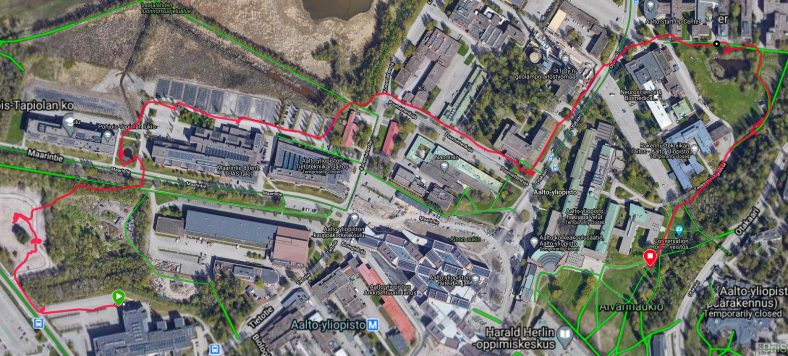
Infrastructure walk route
The rainy weather on that day provided an opportunity to showcase the stormwater issues and management using nature-based solutions in action. The professionals engaged in an intensive exchange of their views from the perspectives of stormwater management, service design, and land and infrastructure management. This type of walk is a good way to connect professionals in different fields as well as everyday users of infrastructures. It provided educational yet mutual communication practices.
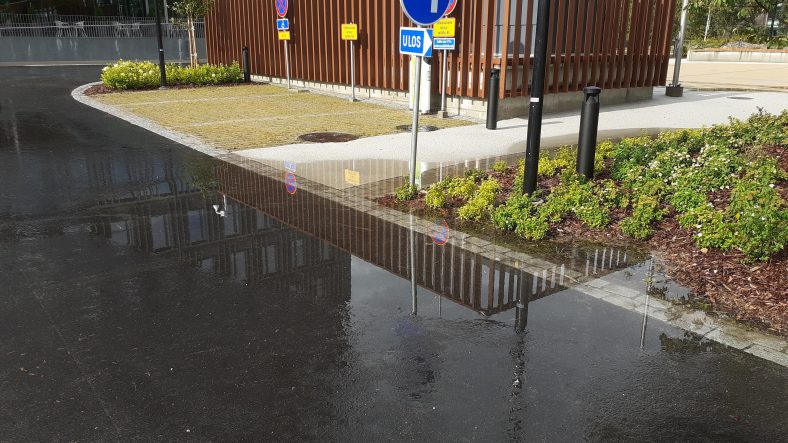
Stormwater starting to accumulate in the street during rain
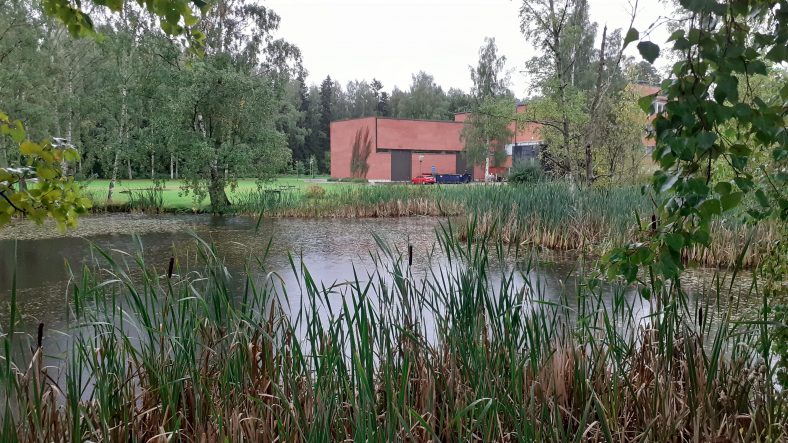
Ossilamppi pond
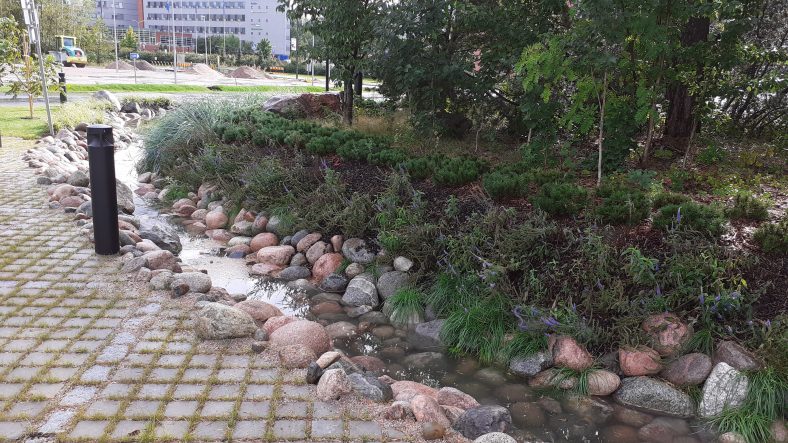
Roadside swale in action
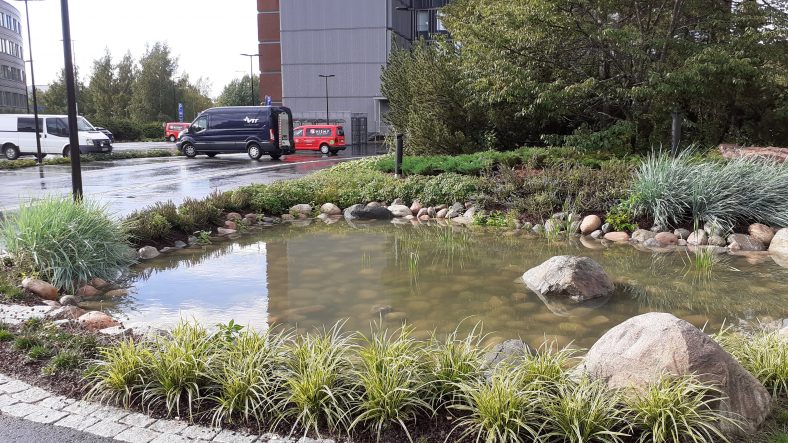
Rain garden in action
ACRE (https://www.aalto.fi/en/campus/aalto-university-campus-real-estate-acre).
NODUS (https://www.aalto.fi/en/department-of-design/nodus-sustainable-design-research-group)
Environmental Hydraulics Lab (https://www.aalto.fi/en/services/environmental-hydraulics-lab). Environmental Hydraulics Lab is currently working on improving stormwater management on campus.

